 |
 |
 |
| |
Mpox Mortality 27% if CD4s Below 100 With HIV Infection
|
| |
| |
30th CROI, Conference on Retroviruses and Opportunistic Infections, February 19-22, 2023, Seattle
Mark Mascolini
Mpox mortality stood at 15% in HIV-positive people with a CD4 count below 200 and at 27% in people with fewer than 100 CD4s, according to analysis of 382 people with mpox in a global case series [1]. There were no deaths for PLWH its above 200 CD4. Almost one quarter of HIV-positive people who acquired mpox had severe necrotizing disseminated lesions, which the researchers proposed is an AIDS-defining condition. Among those that died 30% had CNS complications. There were no deaths in the small number of people vaccinated. the cause of death wad 74% metic shock, 14.8% respiratory failure, 7.4% disseminated MPOX, and 3.7% cardiac arrest.
Experts estimate that 85,000 people in 110 countries recently acquired mpox and that 38% to 50% of them have HIV infection. Most people with HIV and mpox are taking antiretroviral therapy (ART) and have a viral load below 50 copies and a CD4 count above 500. But scant research considers mpox outcomes in people with advanced HIV infection.
To address that issue, an international team tapped the SHARE-Net database including people in Europe (10 countries), North and South America (8 countries), and Africa (1 country). The mpox analysis included people older than 18 years with PCR-positive mpox, a CD4 count below 350, and/or CDC stage C HIV (AIDS). Descriptive analyses covered the period from May 11, 2022 to January 18, 2023.
Median age of the 382 people with mpox stood at 35, and most (96%) were cisgender men. More than half (59.7%) already had an HIV diagnosis and took ART. Half (50.5%) had an HIV load below 50 copies, 22.3% had a CD4 count below 100, and 24.6% had a CD4 count between 100 and 200. Only 4.2% had smallpox vaccination before 2022, while 7.2% got vaccinated in 2022.
Overall, 27 of 382 people (7.1%) with mpox died. More than one quarter, 27.1%, with a CD4 count below 100 died, as did 4.3% with a count between 101 and 200. No one with a higher CD4 count die. Among people with an HIV load below 10,000 copies, 16.2% died, while 0.5% with an undetectable viral load died and no one with a viral load between 51 and 10,000 copies died. Among people with a CD4 count below 100, 7% with a viral load under 50 copies died and 29.7% with a viral load above 10,000 copies died.
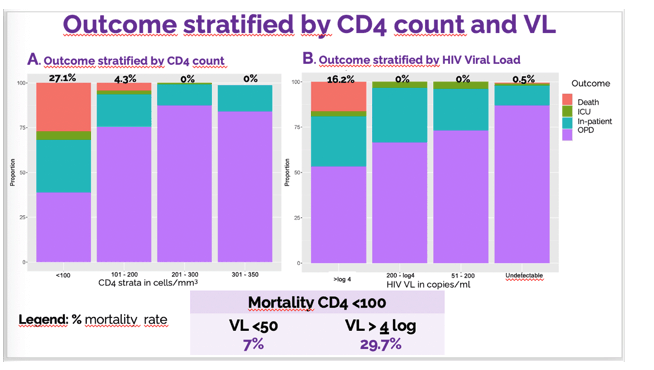
Among people with familiar HIV-related comorbidities, those with a CD4 count below 100 consistently made up the largest proportion with the following comorbidities: respiratory, ocular, gastrointestinal, skin, central nervous system, cardiac, bacterial, urinary, rectal, and oropharyngeal.
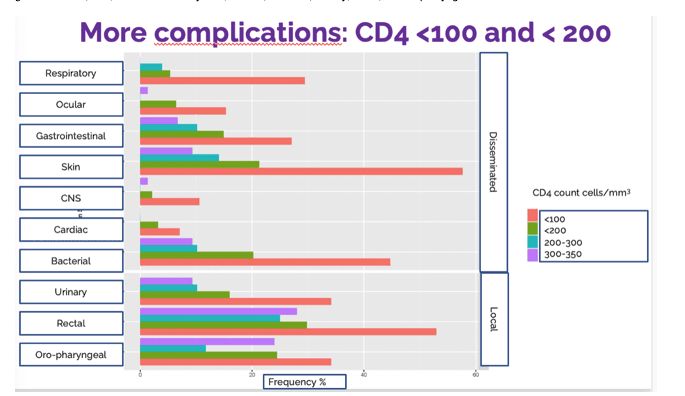
Almost everyone with mpox, 364 of 382 (95%), had rash, with a median peak of 15 lesions lasting a median of 23 days. Lesions were anorectal in 33.0%, oropharyngeal in 22.3%, and genitourinary in 16.8%. Eighty-four people (22%) had large necrotizing lesions.....were "very much related" to CD4 count & common in those that died....."in people with immunosuppression they were unable to contain the infection".
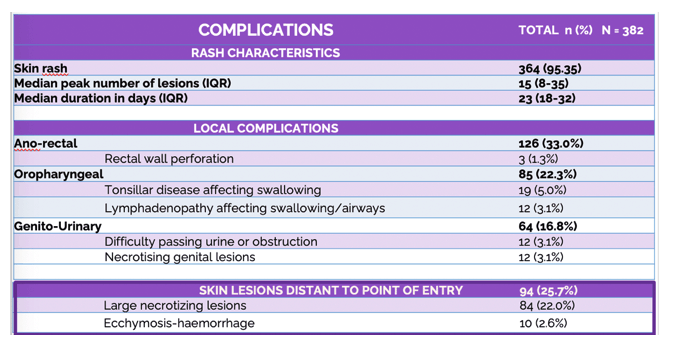
Twenty-five of 27 people with mpox (93%) who died had severe coalescing or necrotizing skin lesions, 24 (89%) had blood stream or secondary bacterial infections, and 23 (85%) had respiratory symptoms and respiratory failure.
Among 85 people who started or restarted ART during the observation period, 21 (25%) had suspected mpox immune reconstitution inflammatory syndrome (IRIS). Median days from mpox infection to ART stood at 21, and median days from ART to worsening mpox was 14. Twelve of 21 people (57%) with suspected mpox IRIS died. CNS disease was detected in 3.1%, bacterial infection in 23%, and ocular complications in 5%. 28% were hospitalized, 8.9% in the ICU, 5.5% ventilated.
The researchers proposed the mpox is an opportunistic pathogen, and its severe necrotizing form is an AIDS-defining condition. They believe CDC and WHO disease classifications should reflect these new findings. The investigators urged policy makers and public health authorities to prioritize access to mpox antivirals and vaccines in countries lacking access.
Reference
1. Mitjà O, Alemany A, Lezama Mora JI, et al. Mpox in people living with HIV and CD4 counts <350 cells/mm3-a global case series. 30th CROI, Conference on Retroviruses and Opportunistic Infections, February 19-22, 2023, Seattle. Abstract 173.
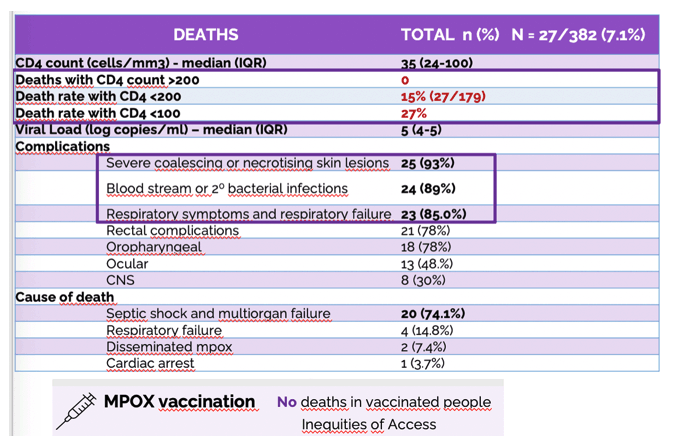
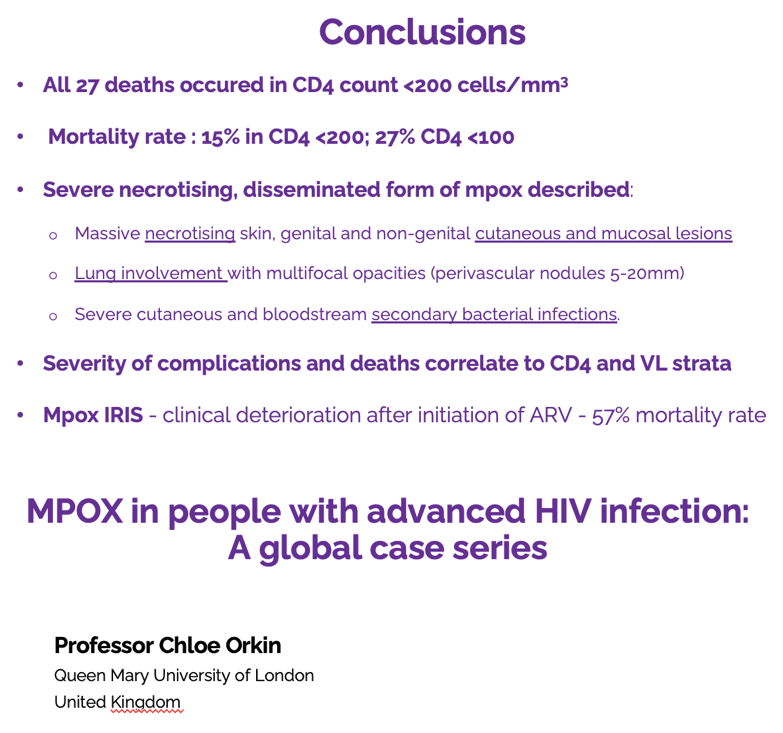
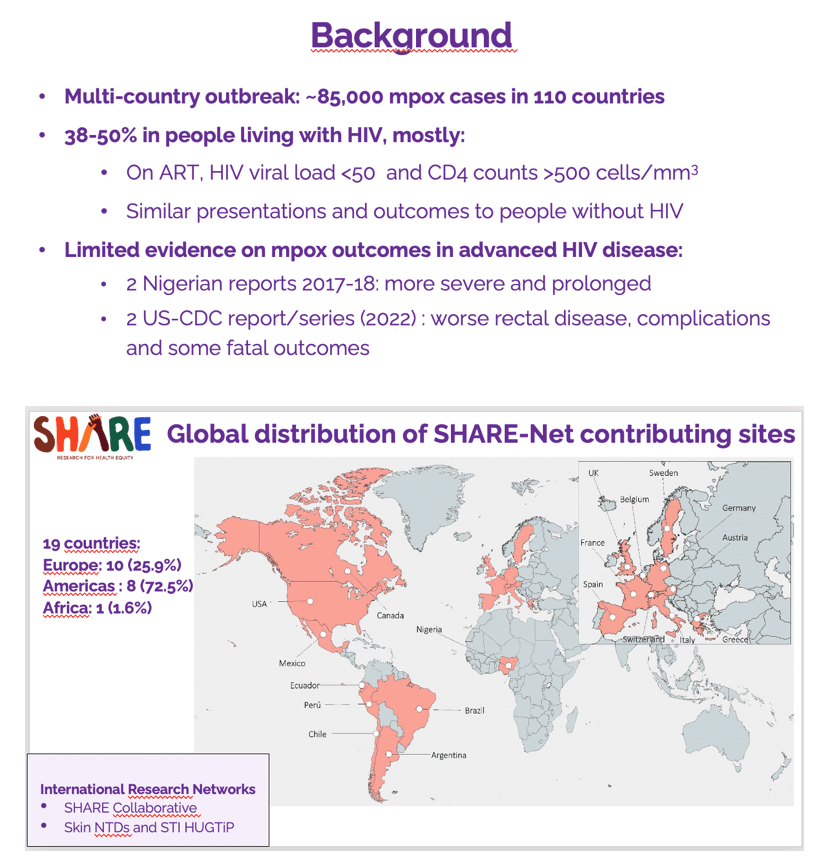
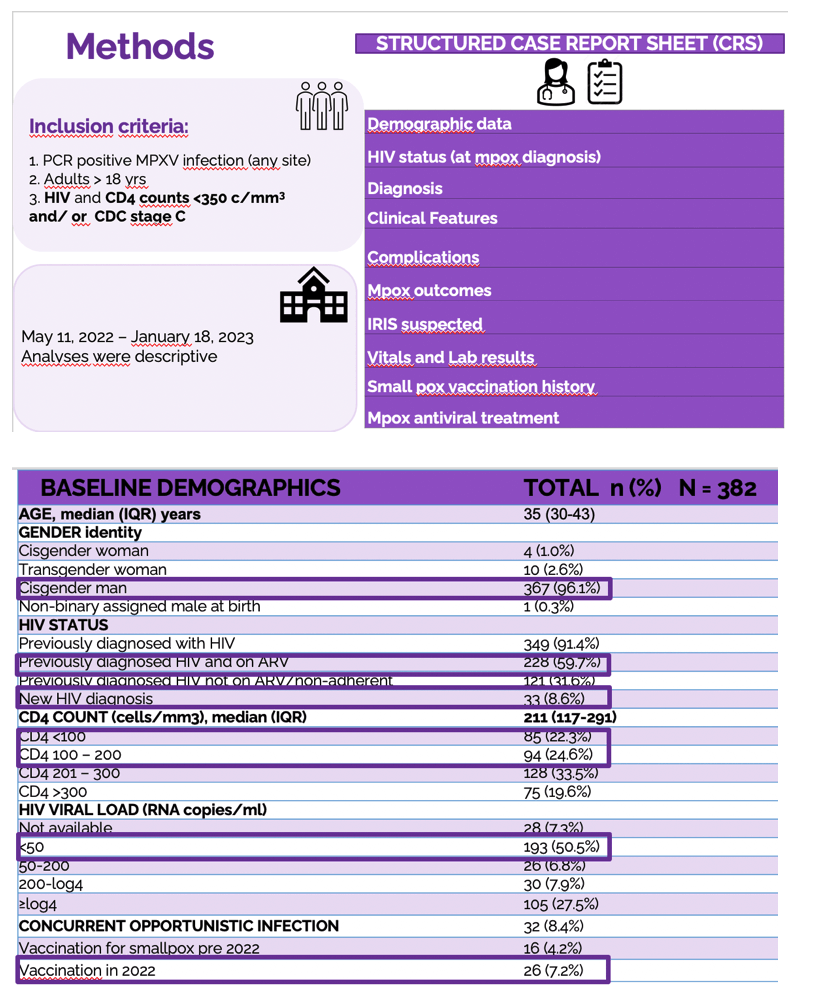
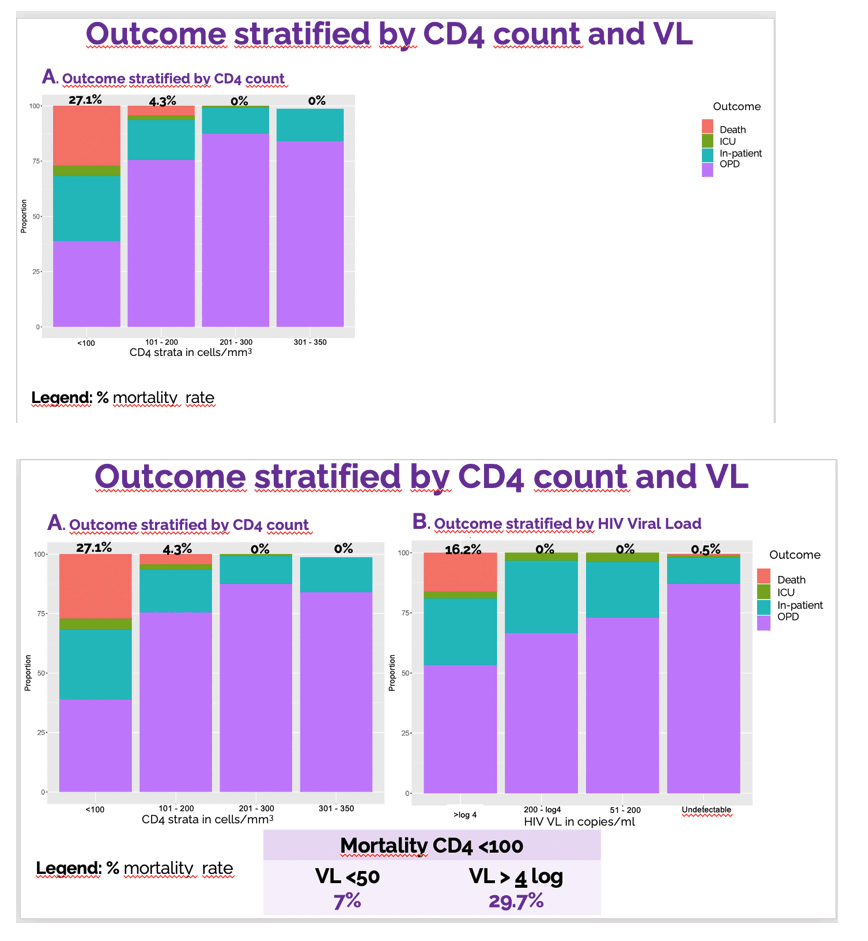
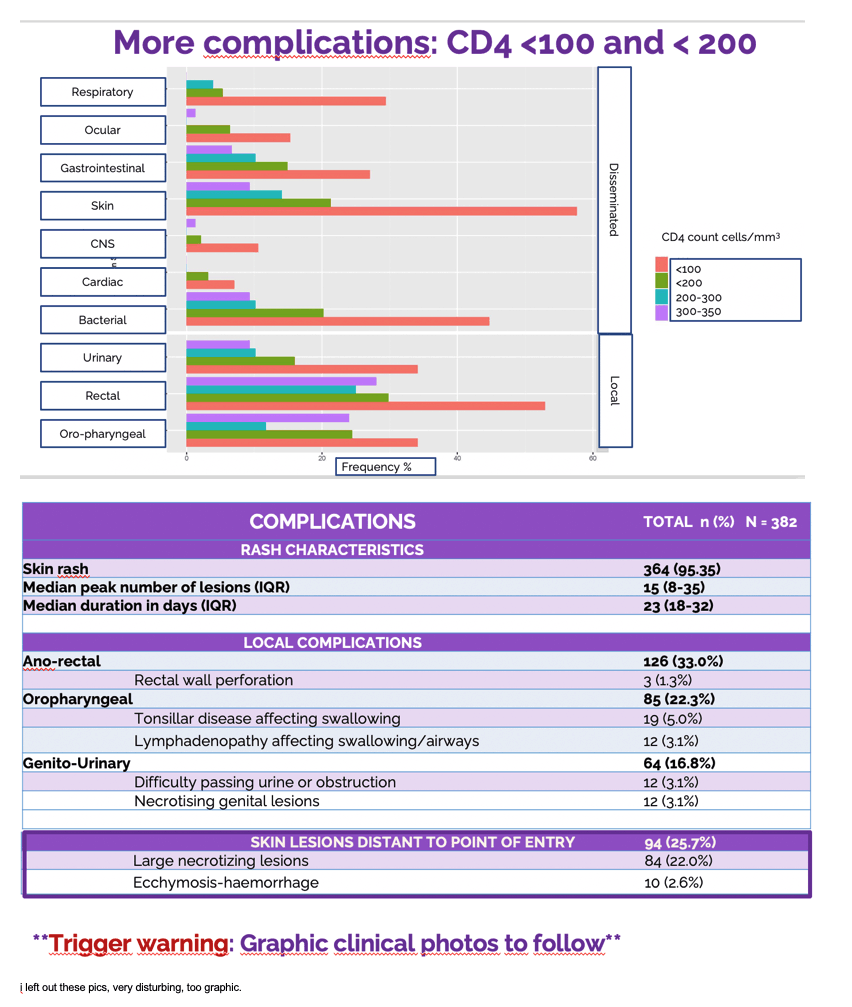
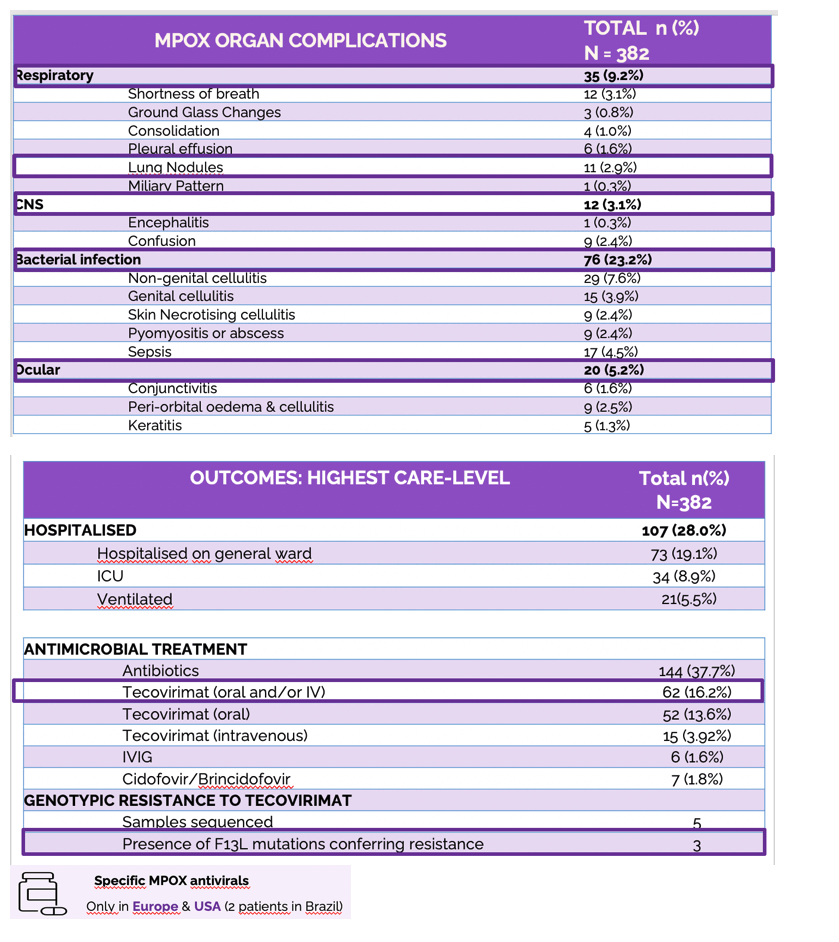
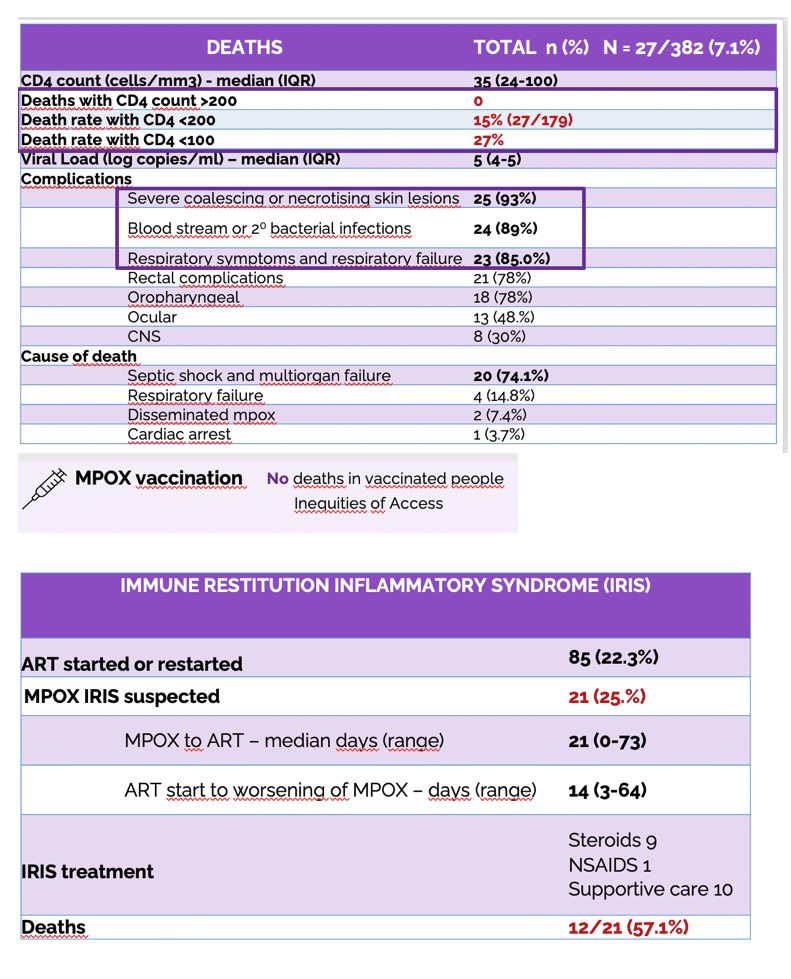
|
| |
|
 |
 |
|
|